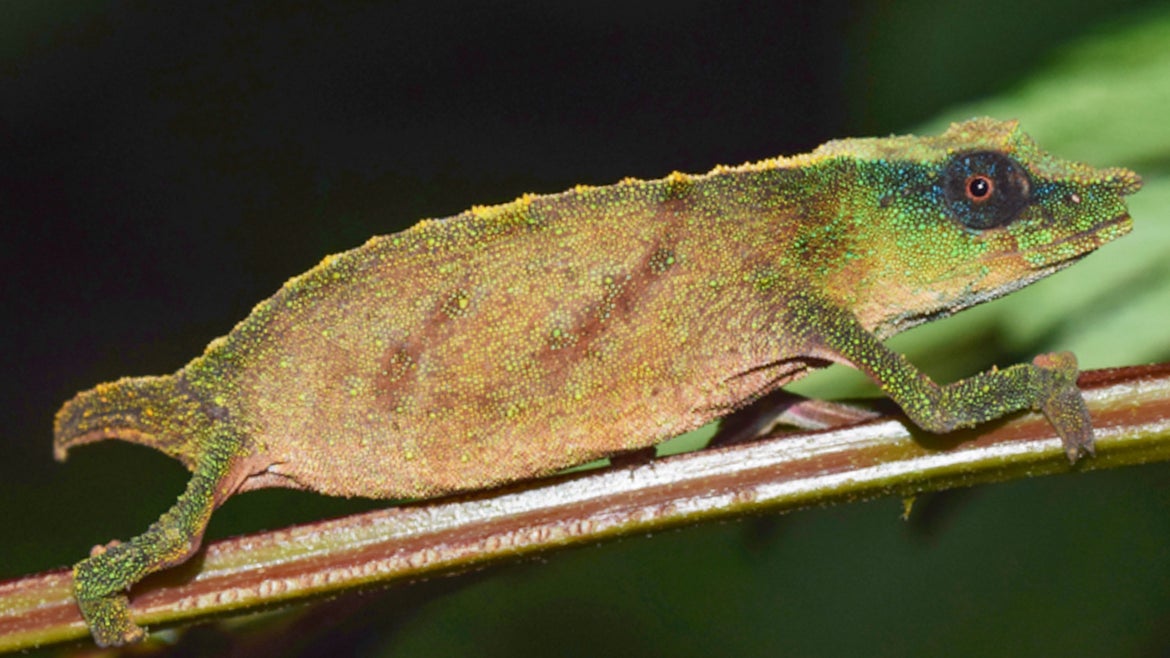The study's lead researcher said while most chameleons can hiss and bite, the Chapman's Pygmy Chameleons "are gentle, and just beautiful." The rare species also vibrates when held.
A rare chameleon species once believed to be extinct was discovered “clinging to survival” in small patches of the Malawi rainforest in southeastern Africa. Now, scientists are urging for conservation measures, including a halt to deforestation, to save the Chapman’s Pygmy Chameleon.
“I get sad when I think what’s happening to them – what we are doing to their habitat,” Professor Krystal Tolley, who led the study, said in a statement obtained by People. “They are really just helpless victims.”
The Chapman’s Pygmy Chameleon was first observed in 1992, but in the years since, it was believed to have gone extinct as it makes its home in the Malawi Hills in Southern Malawi, which has largely been cut down.
“They are little, gentle creatures. Other chameleon species can be hysterical, hissing and biting, but pygmy chameleons are gentle and just beautiful,” Tolley said in a statement. “They also vibrate and we could feel it when we held them. We don’t really know why but it’s also probably some form of communication. The fact they do it while held in our hands could mean it’s a way to try and scare predators.”
She explained that the Chapman’s Pygmy Chameleon is one of the smallest, at just 2.2 inches long, and are mostly brown but can change colors to become blue and green with little dots all over.
Her research began when a 2014 satellite image showed most of the chameleon’s believed habitat was cleared with only small patches of forest left over.
Along with other researchers and supporters, Tolley and her team made a desperate attempt to raise money to survey the remaining patches of forest, and said they got “goosebumps” when they discovered plenty inside the forest during a 2016 search.
“They blend right into the leaf litter and perfectly pattern match the dead leaves,” she explained.
But conservation efforts to ensure the survival of the remaining Chapman’s Pygmy Chameleons must take place immediately, Tolley warned. “The forest loss requires immediate attention before this species reaches a point from which it cannot return. Urgent conservation action is needed, including halting of forest destruction and recovery of habitat to promote connectivity,” she said.
The International Union for Conservation of Nature (IUCN) currently list the Chapman's pygmy chameleon as critically endangered on its Red List of Threatened Species.











